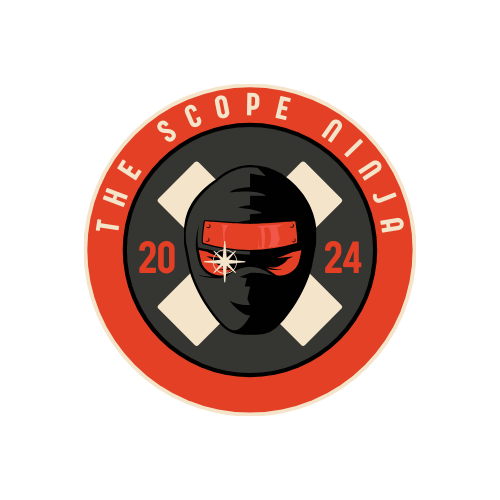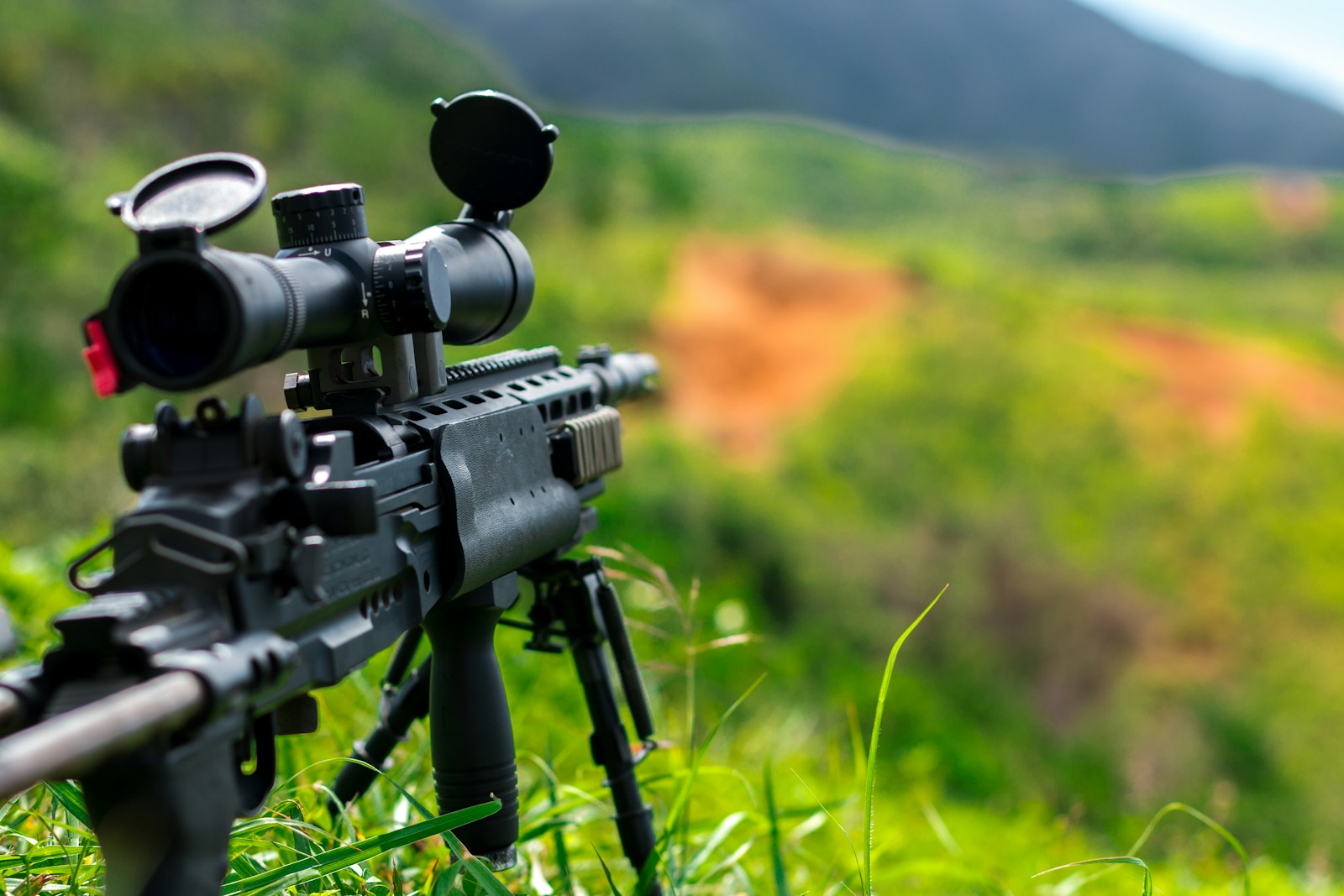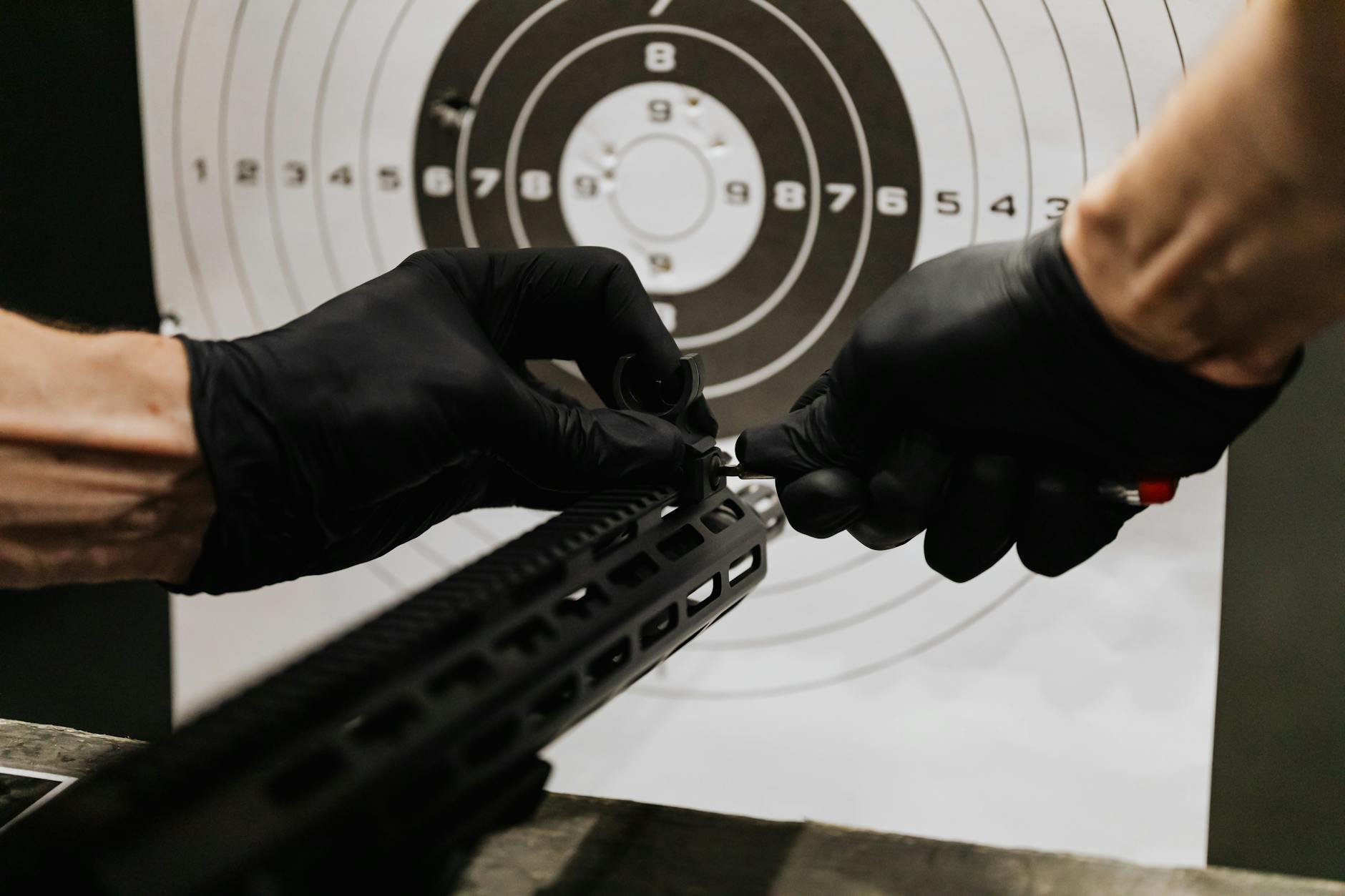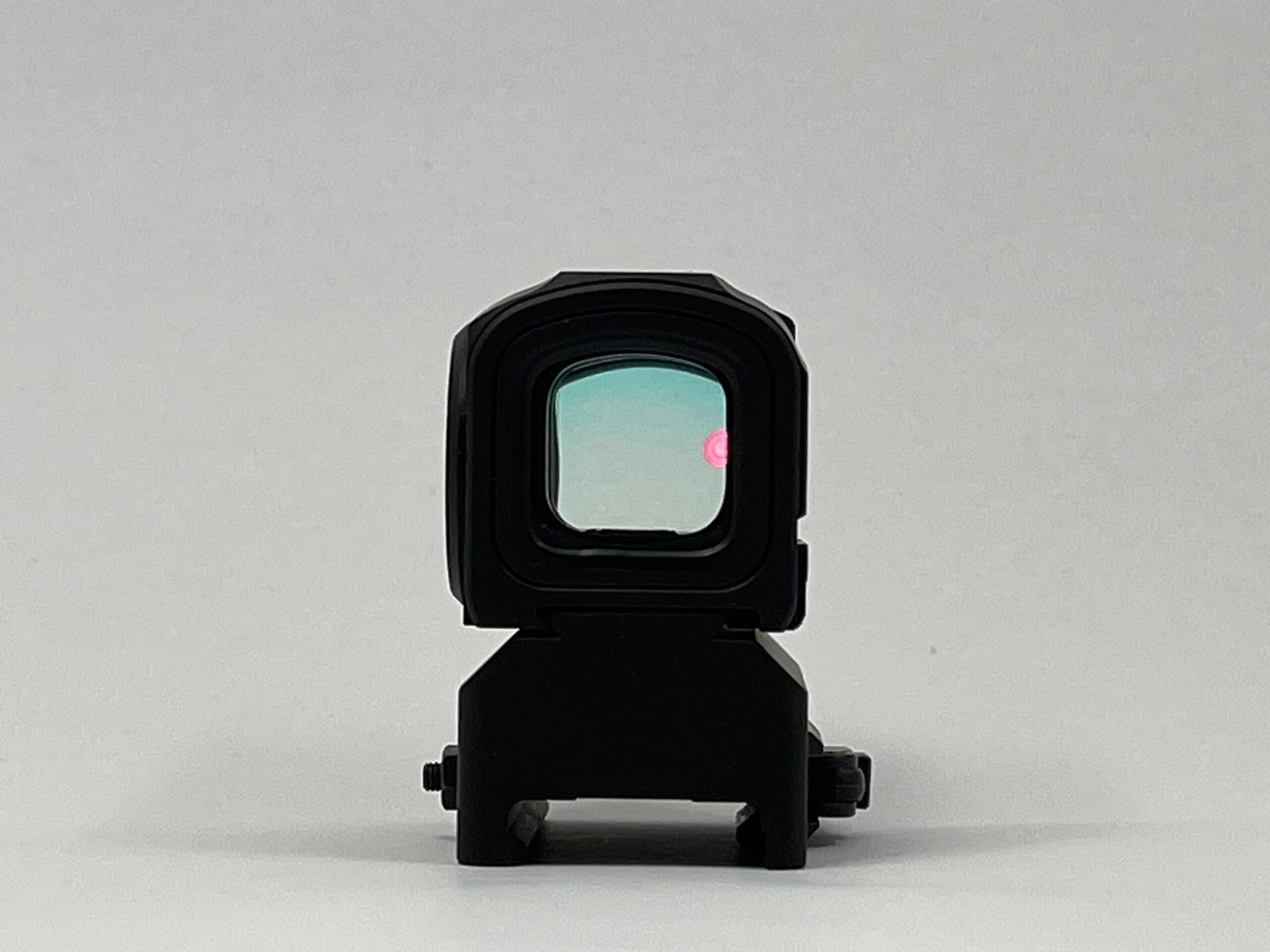
Understanding Optics and Magnification
When it comes to choosing the right gun scope, understanding optics and magnification is key to hitting your target with precision. Optics refers to how light is gathered and transmitted through the scope, affecting clarity and brightness. Magnification, on the other hand, determines how much closer your target appears. Let’s dive deeper into these concepts to demystify the world of scopes!
How Optics Work in a Gun Scope
Imagine optics as the eyes of your rifle—except way more sophisticated. A gun scope uses lenses and sometimes mirrors to collect and focus light from the environment. This focused light creates a magnified image of your target, allowing you to aim accurately even from a distance. The quality of optics directly impacts how clear and bright your target appears through the scope.
Modern scopes often use multiple lenses arranged in a series called an optical train. Each lens serves a specific purpose, such as correcting aberrations or enhancing light transmission. Coatings applied to these lenses further improve clarity by reducing glare and maximizing light gathering efficiency.
Magnification: Getting Closer Without Moving
Magnification is like having a zoom function on your rifle. It allows you to see your target larger and in more detail than with the naked eye. Scopes are typically classified by their magnification range, such as 3-9x or 4-16x, where the first number represents the lowest magnification setting and the second number the highest.
Factors Affecting Optical Clarity
Optical clarity refers to how sharp and crisp the image appears through the scope. Several factors influence optical clarity, starting with the quality of the lenses and coatings used. High-quality lenses with advanced coatings minimize distortion, glare, and color aberrations, resulting in a clearer view.
Additionally, the size of the objective lens (the one farthest from your eye) plays a crucial role. A larger objective lens allows more light to enter the scope, improving brightness and clarity, especially in low-light conditions. However, larger objective lenses may add weight and bulk to your rifle, so it’s a trade-off to consider based on your shooting needs.
Factors to Consider Before Buying Your Next Gun Scope
Shopping for a gun scope can feel like browsing a candy store—you’re dazzled by all the options! But before you dive headfirst into that sea of optics, let’s break down the key factors you should consider to make the best choice for your shooting needs.
Purpose and Shooting Environment
First things first, ask yourself: What do you plan to use the scope for? Are you a hunter stalking deer in dense woods or a competitive shooter aiming for bullseyes at the range? The intended purpose of your scope will dictate its features and specifications.
If you’re hunting in low-light conditions, you might prioritize a scope with a larger objective lens for better light transmission. For tactical shooting or long-range precision, opt for scopes with higher magnification and adjustable turrets for precise adjustments.

Magnification Range and Reticle Type
Magnification isn’t one-size-fits-all—it depends on your shooting style and environment. Consider how far you typically shoot and choose a magnification range that suits those distances. A variable magnification scope (e.g., 3-9x or 4-12x) offers versatility for different scenarios, while fixed magnification scopes (e.g., 6x or 10x) are simpler and often more rugged.
The type of reticle (crosshair pattern) can also make a big difference. Do you prefer a traditional duplex reticle for simplicity, or a mil-dot reticle for precise distance estimation and holdovers? Some scopes even offer illuminated reticles with adjustable brightness settings, ideal for low-light conditions or fast target acquisition.
Build Quality and Durability
A gun scope isn’t just an accessory—it’s an investment in your shooting accuracy. Look for scopes made from durable materials like aircraft-grade aluminum that can withstand recoil and rough handling. Waterproof, fog-proof, and shockproof features are also essential, especially if you’ll be hunting in varying weather conditions or rugged terrain.
Pay attention to the scope’s construction and finish. Is it nitrogen-purged to prevent internal fogging? Are the lenses coated to resist scratches and enhance light transmission? These details can impact the scope’s performance and longevity in the field.
Budget Considerations
Let’s talk turkey—your budget matters. Scopes come in a wide range of prices, from budget-friendly options to high-end models that cost as much as your first car. Set a realistic budget based on your shooting needs and stick to it. Remember, a more expensive scope isn’t always better if it doesn’t meet your specific requirements.
Consider the cost of additional accessories too, such as scope rings or mounts. These accessories ensure your scope fits securely on your rifle and maintains zero through repeated use. Investing in quality accessories can enhance your shooting experience and protect your scope investment.
Comparing Different Types of Reticles: Finding Your Crosshair Match
When it comes to gun scopes, the reticle—also known as the crosshair—is your guide to precision aiming. But with so many types of reticles out there, how do you choose the right one for your shooting style? Let’s explore the world of reticles and find the perfect match for your next scope.
Traditional Duplex Reticles: Simple Yet Effective
The classic duplex reticle is like your favorite pair of jeans—reliable and timeless. It features thick outer lines that taper to thinner crosshairs at the center, offering a clear aiming point without distracting clutter. This type of reticle is ideal for hunting and general shooting scenarios where quick target acquisition is key.
The simplicity of a duplex reticle makes it easy to align with your target quickly. It’s versatile enough for various distances and lighting conditions, making it a popular choice among hunters and casual shooters alike. If you prefer a straightforward approach to aiming without unnecessary complexity, the duplex reticle could be your go-to option.
Mil-Dot Reticles: Precision at Your Fingertips
For the tactical shooter or long-range enthusiast, the mil-dot reticle is like having a built-in rangefinder in your scope. This reticle features small dots or hash marks along the crosshairs, spaced at precise mil (milliradian) intervals. These markings allow you to estimate the distance to your target and make precise holdover or windage adjustments.
Mil-dot reticles are favored by military and sniper applications for their ability to calculate bullet drop and wind drift accurately. They require some training to use effectively, but once mastered, they provide unmatched precision for target shooting and competitive shooting events. If you enjoy the challenge of calculating precise shots at varying distances, the mil-dot reticle could be your new best friend.
Illuminated Reticles: Shine Bright in Any Light
When daylight fades or shadows lengthen, an illuminated reticle can be your saving grace. This type of reticle features built-in illumination settings, typically in red or green, that enhance visibility in low-light conditions. Illuminated reticles come in various designs, including duplex and mil-dot configurations, offering flexibility for different shooting environments.
The adjustable brightness settings allow you to tailor the reticle’s visibility to match ambient light conditions without overwhelming your vision. Whether you’re hunting at dawn or dusk, or engaging targets in dense woods or urban settings, an illuminated reticle ensures you can maintain accuracy and clarity when it matters most.
Conclusion
Understanding optics and magnification is like mastering the secret sauce to perfect shooting. It’s not just about seeing through a lens—it’s about clarity, precision, and enhancing your shooting experience. Optics, the eyes of your rifle, gather and focus light to create a sharp image of your target, while magnification brings your target closer, making every shot count.
As you navigate the world of gun scopes, remember the importance of optical clarity. Quality lenses and coatings minimize distortion and maximize light transmission, ensuring a clear view even in challenging conditions. The size of the objective lens plays a crucial role too, balancing brightness with the scope’s overall weight and size.
Magnification is your zoom button, allowing you to adapt to different shooting distances. Whether you’re aiming at close-range targets or dialing in on distant game, choosing the right magnification range ensures you maintain a clear sight picture and make accurate shots.
To make an informed purchase, consider factors such as your shooting environment, preferred reticle type, and the scope’s build quality. Are you a hunter braving the woods at dawn, or a competitor seeking pinpoint accuracy at long distances? Understanding your needs helps you select features like a durable, weatherproof construction and the appropriate reticle style—whether it’s the straightforward duplex, the precise mil-dot, or the adaptable illuminated reticle.
Ultimately, finding the perfect gun scope is about balancing functionality with personal preference and budget. Take your time to research and compare options, read user reviews, and if possible, test scopes before making your decision. A well-chosen scope not only enhances your shooting accuracy but also adds to the enjoyment and success of your outdoor adventures.
So, equip yourself with knowledge, aim for excellence, and let your chosen gun scope be your trusted companion in every shot. Happy shooting!




